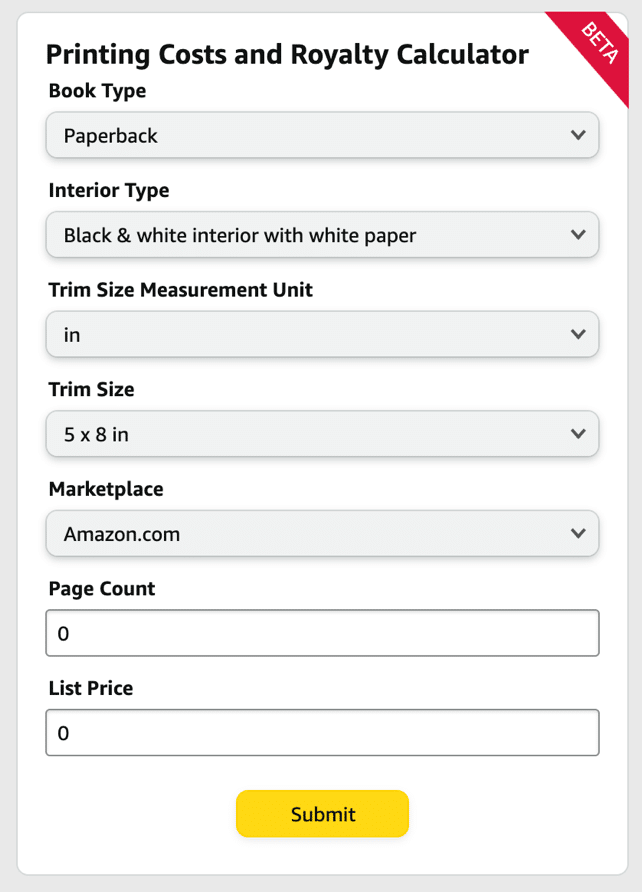
Welcome back to our Amazon KDP end-of-year crash course! In this latest installment, we’re delving into the art of “change management.” Because, let’s face it, change is the only constant, especially in the ever-evolving world of online merchandising. So, fasten your seatbelts as we explore the realms of platform rules, copyright crusades, and the subtle art of staying one step ahead.
EMBRACING THE WINDS OF CHANGE
Change is not just a buzzword; it’s the beating heart of progress, and in the world of online selling, it’s unavoidable. This week, we’re diving into the importance of “change management” – acknowledging and responding to shifts in the marketplace and platforms. Here’s the rundown on what’s in store:
1. What platform rules/functions changed?
- Stay up-to-date with changes to avoid pitfalls.
- Compliance is your ticket to a smooth journey through the online selling landscape.
The dynamic nature of online platforms demands sellers stay vigilant for changes. Whether it’s alterations to content policies, marketplace dynamics, or platform functions, staying informed is crucial. Non-compliance can result in suspension or termination, emphasizing the importance of being aware and adapting to these shifts.
2. What platform rules/functions are expected to change?
- Research and anticipate upcoming changes.
- Being prepared gives you a competitive edge in the ever-evolving market.
Foreseeing changes in platform rules provides a strategic advantage. Researching industry trends and keeping an eye on platform announcements allows sellers to prepare for modifications. This proactive stance ensures adaptability and a potential edge over competitors unaware of impending shifts.
3. What platform changes will improve your listings?
- Identify opportunities to optimize based on platform changes.
- Enhance visibility and potentially boost sales through strategic adjustments.
Every alteration in platform rules presents an opportunity. Sellers should keenly assess changes and identify ways to optimize their listings. Whether it’s leveraging new features or aligning content with updated algorithms, strategic adjustments can enhance visibility and potentially lead to increased sales.
4. What new opportunities/limitations can you forecast?
- Look ahead to predict opportunities or limitations.
- Being proactive helps you navigate the shifting tides of the online marketplace.
The ability to forecast potential opportunities or limitations is a valuable skill. By looking ahead, sellers can position themselves to harness emerging trends or sidestep potential pitfalls. Proactivity in assessing the evolving landscape ensures readiness to navigate challenges and seize new opportunities.
AMAZON’S CATEGORY REVOLUTION
In May 2023, Amazon shook the foundations of self-publishing by revamping its categorization methodology for KDP publishers, and we wrote about it back in June. Brace yourselves, publishers – this change has left no stone unturned.
THE OLD AND THE NEW
Previous System:
- Publishers could choose up to 10 categories for their book.
- Two Bisac categories and up to eight browse categories, the latter added through an email request.
Publishers once grappled with a system allowing up to 10 categories, leading to some unconventional practices. The addition of Bisac categories and the cumbersome email request process contributed to a less-than-ideal system that left many authors in the dark about their full category options.
New System:
- Publishers can now choose only three categories during the publishing process.
- Category requests via email are a thing of the past; all selections are done in the backend.
- Available categories depend on the primary marketplace chosen.
The transformation brings a streamlined process with publishers now having the power to select three categories upfront during the publishing process. No more emails – all selections are handled seamlessly in the backend. The available categories now hinge on the primary marketplace, offering a more straightforward and transparent approach.
THE SELECTION DANCE
Selection Process:
- Start broad with an overall category.
- Drill down to a subcategory for specificity.
- Finalize with the placement within that subcategory.
The dance of category selection begins with a broad stroke, choosing an overarching category. From there, sellers refine their choices, drilling down into subcategories for specificity. The final flourish comes with selecting the precise placement within that subcategory, creating a nuanced and well-defined categorization for their work.
Relevance is Key:
- The shift emphasizes the importance of selecting relevant categories.
- Amazon, the vigilant guardian, is cracking down on irrelevant categorization practices.
With a spotlight on relevance, the shift discourages the past practice of selecting categories solely for their competitiveness. Amazon’s watchful eye is now keener, deterring irrelevant categorization that might compromise the integrity of the browsing experience for customers.
How We Can Help:
- Enter BookBolt
- Harness the historical category feature to analyze trends and competition.
- Advises against solely focusing on lower competition, echoing the evolving strategies of self-publishing.
At BookBolt, we have a comprehensive solution for category selection. The historical category feature provides invaluable insights, allowing publishers to gauge trends and competition. The tool encourages a balanced approach, cautioning against fixating solely on lower competition without considering broader market dynamics.
Flexibility:
- Categories can still be changed at any time.
- However, recommends giving selected categories time to perform before making changes.
- Frequent changes hinder effective evaluation.
The flexibility remains; publishers can modify their category choices at any time. Yet, a note of caution encourages patience, urging sellers to allow selected categories time to yield results before initiating changes. Frequent adjustments impede the ability to gauge the effectiveness of the chosen categories.
IMPACT ON DELIVERABILUTY AND SALES
The Numbers Game:
- Reduction from 10 to 3 categories doesn’t spell disaster.
- Higher competition categories may not have significantly contributed to discoverability.
Contrary to concerns, the reduction from 10 to 3 categories doesn’t necessarily lead to a decline in discoverability. The past inclusion of higher competition categories may not have significantly contributed to a book’s visibility, prompting a shift in focus to making strategic and impactful choices with the limited category selection.
Strategic Choices:
- The change prompts publishers to be more strategic in category choices.
- Suggests that the shift won’t adversely affect discoverability if categories are wisely selected.
- Acknowledges the need for informed decisions in the evolving landscape of self-publishing.
Publishers are now urged to adopt a more strategic mindset when selecting categories. The shift, far from being a hindrance, is viewed as an opportunity to enhance discoverability through well-thought-out choices. The evolving landscape demands informed decisions and a willingness to adapt to the new paradigm of self-publishing.
ADDITIONAL INSIGHTS
Print on Demand Pricing Changes:
- Amazon increased print on demand services pricing.
- Large trim size books, especially with color printing, face a more significant impact.
- Authors can utilize the KDP Printing Costs and Royalty Calculator for cost projections.
The winds of change also touched the pricing landscape, with Amazon adjusting its print on demand services. The impact is more pronounced for large trim size books, particularly those with color printing requirements. Authors are advised to navigate this change seamlessly using the KDP Printing Costs and Royalty Calculator to project costs and manage returns.
Overall Impact Assessment:
- Changes in category selection are generally positive, providing authors with more options within KDP.
- Authors are advised to calculate costs in advance, particularly for large trim size books.
The overarching impact of the changes in category selection is deemed positive, offering authors a more expansive array of options directly within the KDP interface. To navigate the evolving landscape successfully, authors are encouraged to proactively calculate costs, especially for larger trim size books, using tools like the KDP Printing Costs and Royalty Calculator.
Recommendations:
- Carefully consider category selection for relevance and potential discoverability.
- Tools like BookBolt can assist in identifying strategic categories for better visibility in top lists.
Strategic category selection remains at the forefront of recommendations. Authors are advised to meticulously consider relevance and potential discoverability when making their choices. BookBolt emerges as a valuable ally in this endeavor, offering insights to identify categories strategically aligned for better visibility in top lists.
Change is inevitable, but your preparation isn’t. Stay updated, anticipate shifts, and for the love of Amazon, make strategic choices. It’s a wild online world out there, but armed with knowledge, a touch of sarcasm, and the right content, you’ll not only survive but thrive. Here’s to conquering the seas of change and making 2024 the year of your KDP account triumph! Cheers to more sales and fewer headaches!


